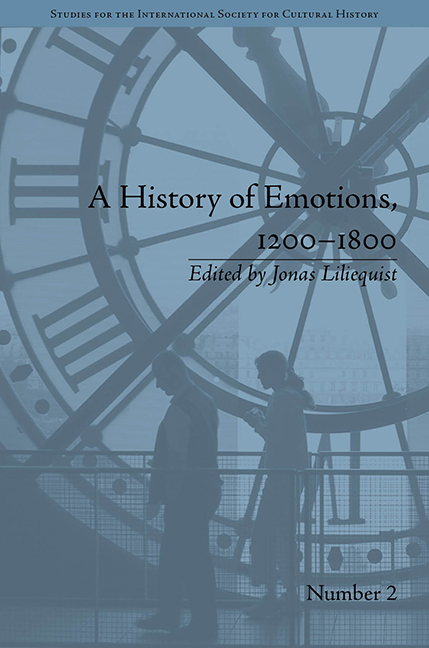Book contents
- Frontmatter
- Contents
- List of Contributors
- List of Figures
- Introduction
- I Theoretical Issues
- II Emotional Repertoires
- III Music and Art
- IV Gender, Sexuality and the Body
- V Uses of Emotions
- 11 The Little Girl who could not Stop Crying: The Use of Emotions as Signifiers of True Conversion in Eighteenth-Century Greenland
- 12 The Political Rhetoric of Tears in Early Modern Sweden
- Notes
- Index
12 - The Political Rhetoric of Tears in Early Modern Sweden
from V - Uses of Emotions
- Frontmatter
- Contents
- List of Contributors
- List of Figures
- Introduction
- I Theoretical Issues
- II Emotional Repertoires
- III Music and Art
- IV Gender, Sexuality and the Body
- V Uses of Emotions
- 11 The Little Girl who could not Stop Crying: The Use of Emotions as Signifiers of True Conversion in Eighteenth-Century Greenland
- 12 The Political Rhetoric of Tears in Early Modern Sweden
- Notes
- Index
Summary
The shedding of tears has commonly been seen as a spontaneous, involuntary emotional reaction, but crying could also appear as extremely ritualized and in some sense evoked or God-given, associated with purification and catharsis. In the same way tears could be taken as signs of sincerity and commitment or interpreted as acts of hypocrisy and deception; as signals of authenticity or emotive strategies. Thus it is perfectly adequate to speak about both a language of tears and the power of tears, representing the communicative and rhetorical aspects of crying. In practice the one cannot be separated from the other. In an analytical sense however, sincerity in a communicative perspective depends on the supposed genuineness of the signaled emotions according to existing conventions, while from a rhetorical point of view, sincerity is the intended effect of the very same signals that makes the tears appear genuine and recognized as such. The communicative aspect focuses on conventional meanings, the rhetorical on how conventions have been used and manipulated. This essay shall concentrate on the latter. Inspired by Daniel M. Gross's outline of a new rhetoric of passions and William Reddy's perspective on emotional expression as a type of speech-act (emotives) with relational intent and the potential for altering effects on the self and others, its aim is to discuss the uses of weeping in early modern Swedish political contexts, with focus on the eighteenth century.
- Type
- Chapter
- Information
- A History of Emotions, 1200–1800 , pp. 181 - 206Publisher: Pickering & ChattoFirst published in: 2014



